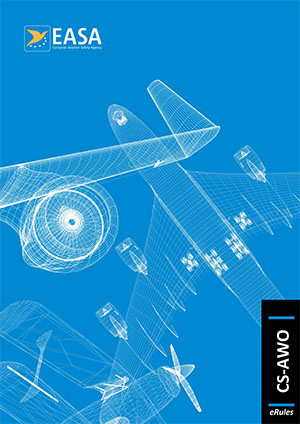ED Decision 2022/007/R
In relation to the approval of the aeroplane for take-off in reduced visibility, the AFM shall state:
(a) the limitations;
(b) the normal and abnormal procedures, including where appropriate, the most critical conditions demonstrated; and
(c) the minimum required equipment.
[Issue: CS-AWO/2]
AMC AWO.C.TOO.111 Aeroplane flight manual – General
ED Decision 2022/007/R
(a) The aeroplane flight manual (AFM) should contain a statement that a system that complies with the requirements of this Subpart is approved for reversionary use only. Visual reference should be the primary means of guidance, and the pilot should not commence the take-off run unless the visual reference and the reported RVR are within the prescribed limits.
(b) Actual RVR minima to be used are subject to the applicable operating regulations and may vary from one Member State to another taking account of local circumstances. For this reason, RVR minima should not be included in the AFM as limitations. To aid operational assessment and the establishment of take-off minima, the RVR values encountered during airworthiness certification may be given.

V1 — take-off decision speed
VFAILURE — speed at which failure occurs
VMCG — ground minimum control speed
VLOF — lift-off speed
Note 1: When showing compliance, the demonstrated lateral path after lift-off may be adjusted for wind drift effect.
Note 2: The 14 m lateral region addresses tracking on the runway surface.
Note 3: The FAA expects the pilot to position the aircraft on the runway centre line. Once on the runway, the take-off guidance system should provide an indication to confirm proper operation.
Note 4: The lateral tracking criteria are referenced to the lateral offset of the aircraft’s centre line between the main landing gear (or aircraft center of gravity).
Figure 1: Deviation envelopes (centre of main wheels)
[Issue: CS-AWO/2]
